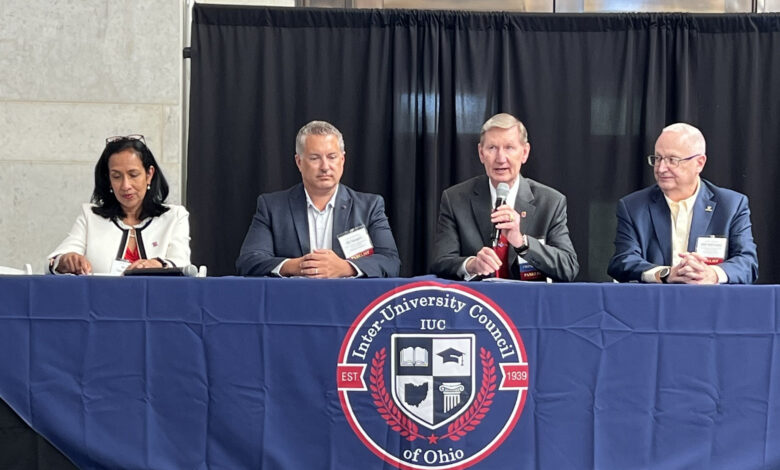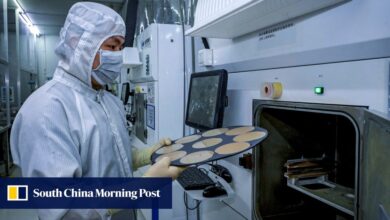Ohio State president discusses AI in higher ed at Statehouse summit

The challenges and opportunities raised by the growing use of artificial intelligence systems are at the forefront of operational and ethical considerations for government and higher education leaders. While the use of artificial intelligence has become more common thanks to programs like ChatGPT or DALL-E, machine learning is not a new phenomenon.
Walter “Ted” Carter Jr., president of The Ohio State University, remembers one of the early machine-learning programs that helped U.S. Navy fighter planes navigate the precarious task of landing on an aircraft carrier sailing in the deep ocean.
“We had created, through a lot of science, a mechanism that could actually manage the stick and throttle against that three-dimensional moving [aircraft carrier], learn and land the airplane safely,” he said. “I have over 2,000 carrier landings and I have more than a handful using that technology.”
Carter said one time the technology didn’t work correctly and it almost ended in a plane crash for him and his colleague.
“So it’s an early lesson, going back 41 years, about how the early development of machine-learning can be an asset but also can end up in disaster,” he said.
Fast forward to 2024, and Carter is leading a university that conducts more than $230 million in AI research involving more than 600 faculty members. Ohio State is also home to the Artificially Intelligent Manufacturing Systems (AIMS) Lab, which brings together industry professionals and academia to deploy AI in manufacturing, and the AI-EDGE Institute, which is working at the intersection of AI and networking to lay the groundwork for more intelligent transportation systems, remote health care and smart aerospace.
Carter was part of a day-long series of discussions for the inaugural Artificial Intelligence Symposium at the Statehouse this week. The Inter-University Council hosted the event, bringing together AI experts from the state’s 14 public universities, industry leaders and government agencies.
The goal of the symposium was to discuss how Ohio can leverage its artificial intelligence assets to advance the state’s interests. From deep fakes and disinformation to preparing students to use AI in the workforce to driving AI innovation through university and industry partnerships, several topics were explored in depth.
Colleges and universities in Ohio already partner with industry leaders such as Microsoft, IBM and Qualcomm in the use of AI for research and development. Beena Sukumaran, dean of the College of Engineering and Computing at Miami University, described the development of a smart factory with Mitsubishi to simulate a factory floor.
“What we envision using the smart factory for is not only to give our students hands-on experience but also to integrate AI technology into manufacturing processes to make it more efficient,” she said.
Beyond industry, the panelists agreed that students need to be prepared to incorporate AI into their academic careers. RJ Sargent, executive director of learning services at the University of Cincinnati’s 1819 Innovation Hub, said equity and digital literacy is critical.
“We want to make sure that it’s not just our engineers, our computer scientists, our data folks in the college of business that are using this, but that this digital and AI literacy is foundational to all UC students,” he said.
Carter said the next evolution of AI will need to include understanding ethical decision-making,
“To me, that’s the next stage … as we get to the next level of supercomputer [research]. And that may take a lot longer to do than we think. I think that if I could have a magic wand, we would apply resources to do that collaboratively because we do have so much talent in all of our 14 public universities.”



